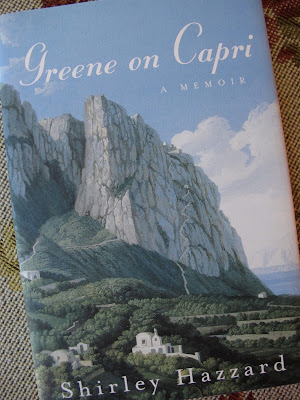Ravello, Italy
Happy Summer! What are your vacation plans? I will be staying close to home most of the time, but I have been dreaming of far flung destinations. Especially Ravello, Capri, Positano...oh those names conjure up such beautiful images. Gorgeous scenery, delicious food, great wines, the Mediterranean, magnificent views, glamour, getting away from it all... I have never traveled to this region, but its beauty is legendary. Twice in one day two different friends mentioned Ravello to me. One was on her way there for a vacation (lucky girl!) and another was reading a book set in Ravello. I am half Italian and spent a lot of time with my Italian grandparents when I was young. They were always cooking delicious food for me and "mangia bene" was a frequent refrain in their house. My grandfather had a vegetable garden in his backyard and I spent many happy hours there as a child wandering through the tomato plants and swinging on the hammock. I have always wanted to go to Rome and Naples, their birthplaces, and trace the footsteps of my ancestors.
Venice, 2005
Who can forget the scene in "The Enchanted April" when Lottie, one of the four Englishwomen who have traveled to Italy, throws open the windows of their Tuscan villa and sees their Italian paradise for the first time. That setting has transformative powers for all of them.
E.M. Forster's first novel is about his signature themes: the collision of cultures and the hypocrisy and snobbishness of Edwardian England. The story concerns an English widow who goes to Italy and marries an Italian. I haven't read this one for a while, but I remember enjoying it. I love this new edition by Vintage Classics.
"A Room With a View" is a gem, romantic and optimistic, once again about young people escaping their restrictive lives and finding love and happiness in Italy. And who can forget the beautiful movie starring Helena Bonham Carter and the scene where Lucy Honeychurch and George Emerson walk in the meadow carpeted with bluebells!
This book must have been responsible for a surge of people buying and restoring villas in Tuscany. Frances Mayes made it sound so romantic and life in Tuscany so beautiful and simple.
"A Year int the World" is another book by Frances Mayes that I have been reading. She writes about the allure of travel and the many places that she has visited all around the world and what they have meant to her. I love her thoughtful reflections about travel. She visits many spots in Italy outside of Tuscany.
A vintage book on Italian cooking given to me by my daughter, don't you love the cover?
********
And here are some that I have accumulated over the years, but haven't had a chance to read:
In these essays Henry James writes of the qualities he admires about Italy, as well as the political shifts and cultural revolutions he observed at the time (from 1872 -1909).
"Innocence" by Penelope Fitzgerald is described as a "delectable comedy of manners" that takes place in Italy in 1955. The story concerns an old Florentine family struggling after the war to keep their villa and farm going.
Author Shirley Hazzard writes about her friendship with the writer Graham Greene on the island of Capri. He came to Capri each summer for years and it was there that they formed their friendship.
"A Book of Secrets" sounds intriguing, the subtitle is "Illegitimate Daughters, Absent Fathers." It tells several different stories that took place in the beautiful and mysterious Villa Cimbrone in Ravello. Can't wait to read this one.
********
Monique at her blog Bringing Travel Home just mentioned a new book "La Bella Lingua" about the beauty of the Italian language. The author Dianne Hales writes about her "love affair with Italian, the world's most enchanting language." It sounds excellent!
Many writers have celebrated the beauty and pleasures of Italy in their books, using Italy as a metaphor for love and liberation. Elizabeth Von Armin, E.M. Forster, and Henry James all wrote about characters finding themselves in Italy. Tell me, are you dreaming about Italy and if so, what books are taking you there? Have you been to Italy? Please tell me about your favorite region or city. We can all be armchair travelers!



















































